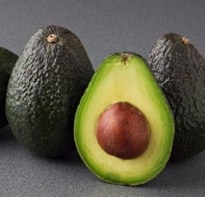Snack too much with the laptop? Don't think about or enjoy food enough? Try an online course to help each morsel matter
It's Wednesday evening and for the last four minutes, I've been holding an avocado. In fact, less holding, more caressing. I run my finger over its leathery skin, concentrate on where it's from (Costa Rica), how it got to me (Lidl, possibly via boat) and what I'll do with it (inhale it if I have to stare at it much longer, I'm famished). For the last week, this routine has been the preamble to each meal.Welcome to my faintly laborious week of mindful eating, the newest offshoot from meditation folks Headspace, the wildly popular secular app created by Andy Puddicombe, a witty ex-Buddhist monk, and his business partner, Rich Pierson. It's an online course, split into three levels (each is 10 days long requiring around 10 minutes a day) to be done whenever you feel like it, wherever is convenient.The whole ethos of mindfulness is to encourage people to live in the moment. The theory goes that we are so busy trying to block out past worries and anticipate future ones that we rarely concentrate on enjoying what we are doing at the precise moment we are doing it. Devotees claim mindfulness can be applied to everything from walking and running to sex and eating. The latter is what interests me here.I am greedy and at times, an emotional eater. Sometimes I will eat less, sometimes more - depending on my state of mind - but I almost always eat without thinking about what I am consuming. I am participating in this for various desired outcomes, none of which involve losing weight. I want to enjoy food, to stop viewing it as I sometimes do as fuel, and to slow the hell down.
Interested in finding out more about how you can live better? Take a look at this month's Live Better challenge here.The Live Better Challenge is funded by Unilever; its focus is sustainable living. All content is editorially independent except for pieces labelled advertisement feature. Find out more here.
To have or not have that avocado? Mindful eating helps appreciate the mental as well as physical aspects of food. Photograph: Ed Young/AgStock Images/Corbis
It's Wednesday evening and for the last four minutes, I've been holding an avocado. In fact, less holding, more caressing. I run my finger over its leathery skin, concentrate on where it's from (Costa Rica), how it got to me (Lidl, possibly via boat) and what I'll do with it (inhale it if I have to stare at it much longer, I'm famished). For the last week, this routine has been the preamble to each meal.Welcome to my faintly laborious week of mindful eating, the newest offshoot from meditation folks Headspace, the wildly popular secular app created by Andy Puddicombe, a witty ex-Buddhist monk, and his business partner, Rich Pierson. It's an online course, split into three levels (each is 10 days long requiring around 10 minutes a day) to be done whenever you feel like it, wherever is convenient.The whole ethos of mindfulness is to encourage people to live in the moment. The theory goes that we are so busy trying to block out past worries and anticipate future ones that we rarely concentrate on enjoying what we are doing at the precise moment we are doing it. Devotees claim mindfulness can be applied to everything from walking and running to sex and eating. The latter is what interests me here.I am greedy and at times, an emotional eater. Sometimes I will eat less, sometimes more - depending on my state of mind - but I almost always eat without thinking about what I am consuming. I am participating in this for various desired outcomes, none of which involve losing weight. I want to enjoy food, to stop viewing it as I sometimes do as fuel, and to slow the hell down.
Advertisement
Advertisement
Advertisement
Advertisement
Interested in finding out more about how you can live better? Take a look at this month's Live Better challenge here.The Live Better Challenge is funded by Unilever; its focus is sustainable living. All content is editorially independent except for pieces labelled advertisement feature. Find out more here.
To have or not have that avocado? Mindful eating helps appreciate the mental as well as physical aspects of food. Photograph: Ed Young/AgStock Images/Corbis
For the latest food news, health tips and recipes, like us on Facebook or follow us on Twitter and YouTube.
Advertisement
